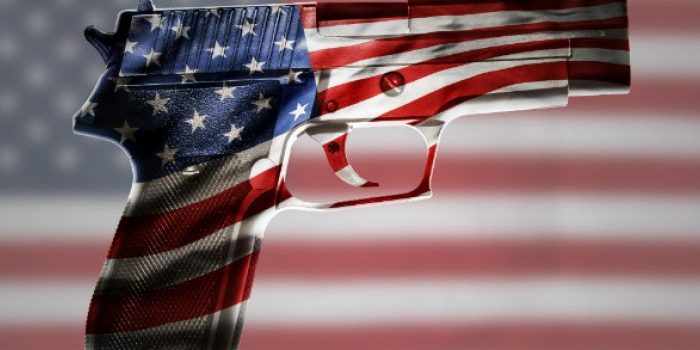
Introduction
Across the United States, gun purchases reflect a variety of personal, cultural, and social motivations. While some Americans seek firearms for self-defense, others view them as tools for hunting, sport shooting, or collecting. Political beliefs and regional traditions also play a role in shaping attitudes toward gun ownership. By exploring the key motivating factors behind gun purchases, we can better understand why millions choose to add a firearm to their homes. This article examines the most common reasons—from protection and heritage to hobbyist interests and investment—highlighting how each factor influences purchasing decisions.
How America’s Motivating Factors Influences Gun Purchasing

1. Self-Defense and Personal Safety
One of the most cited reasons for buying a gun is personal protection:
- Home Defense: Many Americans feel safer having a firearm to deter or respond to home intruders.
- Personal Carry: In states with concealed-carry laws, individuals purchase handguns to protect themselves and loved ones in public.
- Perceived Crime Trends: Spikes in local crime rates or media reports of violent incidents often drive spikes in gun sales.
Feeling in control of one’s safety motivates buyers to choose models suited for quick access and reliability, such as semi-automatic pistols.
2. Hunting and Sport Shooting
Hunting remains a deeply rooted tradition in many regions:
- Food Source: Some families rely on game for supplemental or primary food.
- Outdoor Recreation: Hunting and target shooting offer bonding opportunities and skill-building.
- Competitive Sports: Numerous Americans participate in shooting sports—skeet, trap, and practical pistol competitions—which require specialized firearms.
Sales of rifles and shotguns often rise in early fall as hunting seasons approach, reflecting these seasonal motivations.
3. Cultural and Political Identity
For many, gun ownership is tied to identity and beliefs:
- Second Amendment Rights: Supporters view gun ownership as a constitutional guarantee that requires vigilant protection.
- Rural vs. Urban Divide: In rural areas, firearms are often integral to daily life—used for pest control and farming tasks.
- Political Expression: Buying a gun can serve as a statement of political stance, particularly during debates on gun control.
Gun shows and political rallies frequently become marketplaces for expressing shared values and reinforcing community ties.
4. Collecting and Historical Interest
Some buyers pursue firearms as collectibles or artifacts:
- Antique Firearms: Enthusiasts seek historically significant guns—civil war relics, early 20th-century military rifles.
- Limited Editions: Manufacturers release commemorative models that appeal to collectors.
- Preservation: Collectors often invest in proper storage and restoration, viewing guns as assets rather than tools.
High-end collectors may spend thousands on rare pieces, viewing them as long-term investments.
5. Economic and Investment Considerations
Guns can appreciate in value, driving some purchases:
- Scarcity and Demand: Popular models with limited production runs often increase in resale value.
- Alternative Asset: Some investors diversify portfolios by acquiring firearms that hold or grow in value.
- Black Market Risks: Fears of future restrictions can spur buying now to avoid losing access later.
Financially motivated buyers track market trends and sometimes buy multiple firearms for future resale.
6. Perceived Threats and Government Distrust
Periods of social or political unrest can trigger increased gun purchases:
- Civil Unrest: News of protests or riots can lead people to arm themselves for personal security.
- Pandemic Fears: Health crises, as seen during COVID-19, prompted worries about supply shortages and social order breakdowns.
- Distrust in Authorities: Some buyers fear that authorities may not protect them, driving a desire for self-reliance.
This category often overlaps with self-defense but is specifically fueled by events that shake public confidence.
7. Social and Peer Influences
Word-of-mouth and community trends significantly impact purchasing:
- Family Traditions: Children of gun owners may grow up viewing firearm ownership as normal, leading them to buy their first gun early.
- Friends and Clubs: Shooting clubs and outdoor groups introduce novices to firearms in a social setting.
- Social Media: Influencers and firearms forums share product reviews and buying advice that sway viewers’ choices.
Recommendations from trusted peers often carry more weight than advertisements.
8. Gun Legislation and Regulatory Environment
Changes in laws can create a “buy now” mentality:
- New Restrictions: Proposed bans on certain firearms or magazines often lead to sales spikes before laws take effect.
- Permitting Processes: States that alter concealed-carry permit requirements can see surges in applications and carry-pattern firearms.
- Background Check Expansions: Mandates for more thorough checks sometimes lead to last-minute purchases under old rules.
Buyers monitor legislative calendars closely to time purchases under favorable regulations.
9. Psychological Factors and Empowerment
Owning a gun can fulfill deeper personal needs:
- Sense of Control: Firearms can provide a feeling of empowerment and readiness in uncertain times.
- Mastery and Skill: Learning to shoot well involves discipline and continuous improvement, appealing to those who value self-improvement.
- Anxiety Reduction: Some individuals feel less anxious knowing they have a means of defense.
These internal drivers often work alongside more practical reasons for purchasing.
10. Demographic Trends and Market Data
Understanding who buys guns illuminates broader patterns:
- Gender and Age: While men still make up the majority of gun buyers, female ownership is growing as women seek self-defense and sport-shooting opportunities. Older adults frequently cite protection, while younger buyers often focus on sport shooting.
- Geographic Hotspots: States like Texas, Florida, and Alaska have some of the highest per-capita gun ownership rates.
- Economic Factors: Economic downturns and uncertain job markets can lead to increases in firearm purchases as people prepare for potential unrest.
Market research companies track these trends to predict future demand and guide manufacturers.
Conclusion
Gun purchases in America stem from a complex blend of motivating factors—from self-defense and sport shooting to cultural identity, collecting, and investment. Regional traditions, psychological needs, and legislative changes further shape the reasons people buy firearms. By understanding these motivations, policymakers, retailers, and public health officials can better address safety, education, and regulation. Whether you’re considering your first purchase or studying market trends, recognizing the full spectrum of motivations helps create balanced, informed conversations around gun ownership in the United States.










